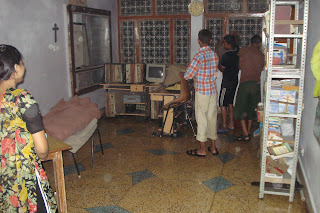Some words I would like to share with the people I met and came to know while in India. Some of them may never actually read these words but they need to be said:
My friends from Orissa: You have endured so much already, may God give you the strength and courage to go back.
To Don: your family may have turned their back on you and thrown you out, but you have a heavenly Father who will never leave you.
To Sonam: I will continue to pray that things will work out for your father and the house the government kicked him out of.
To Basant: Your English is not so good, but I have so much respect for what you feel God is calling you to do. Don’t hesitate.
To Gerin: You never cease to crack me up. Your story was so moving, God healed you so that you can be an instrument of healing to the world.
Mitendra: So sorry to hear about your parents, so glad you shared your story, God redeems every tragedy.
T.S. Sam: Congratulations on you daughters marriage, thanks for letting me tag along.
To Guunjen: I am sorry your family kicked you out of your home for becoming a Christian, I hope your new brothers and sisters in Seharampur can help to fill that hole.
To Kajal: Thanks for teaching me some Hindi, you are a wonderful teacher.
There are many others that I met who were aboslutely amazing people. There are many sad stories, and may inspiring ones too. Each name is a life and a series of stories. I have been privelaged to be a part of some of these stories halfway around the world. Several have said to me, "I will never forget you". That is one of the most humbling things anyone has ever said to me. To them I would respond by saying:
"It has been an honor to be a part of your story..."

















































